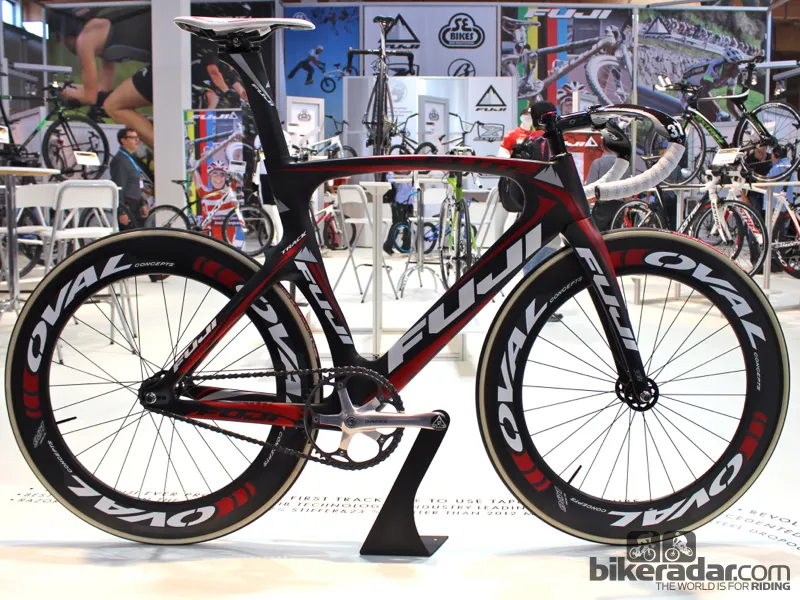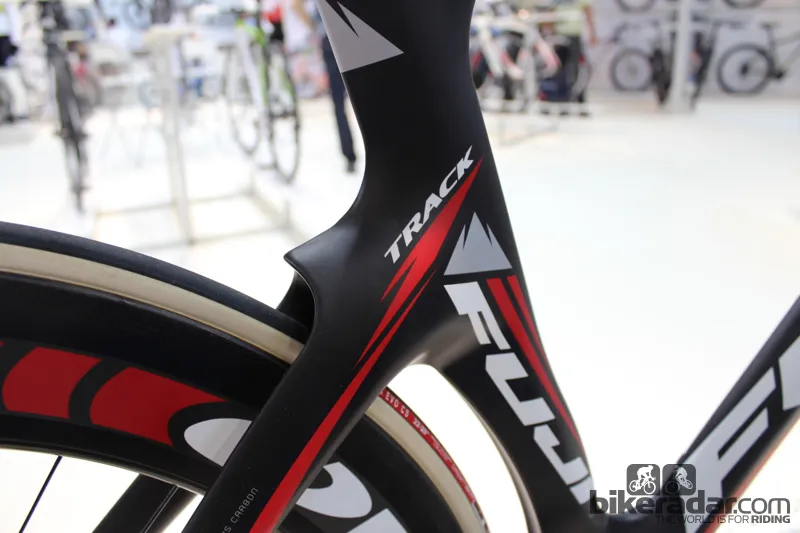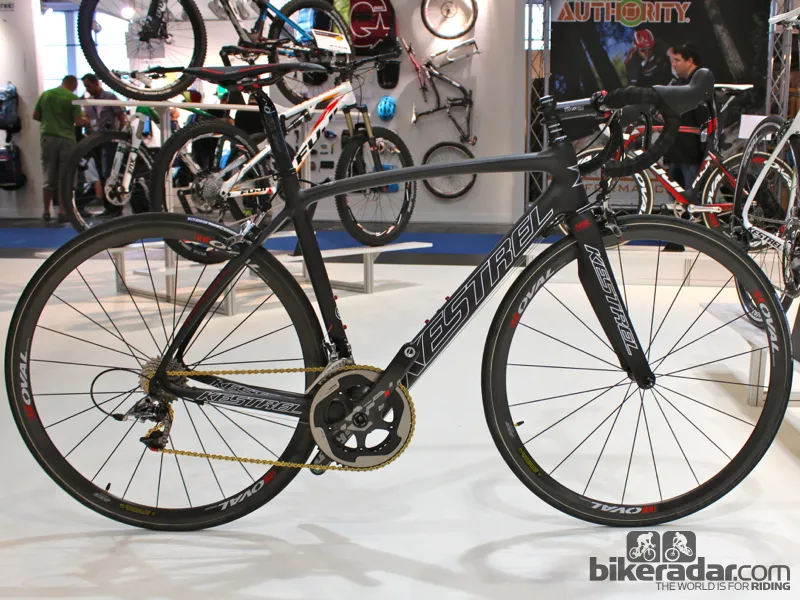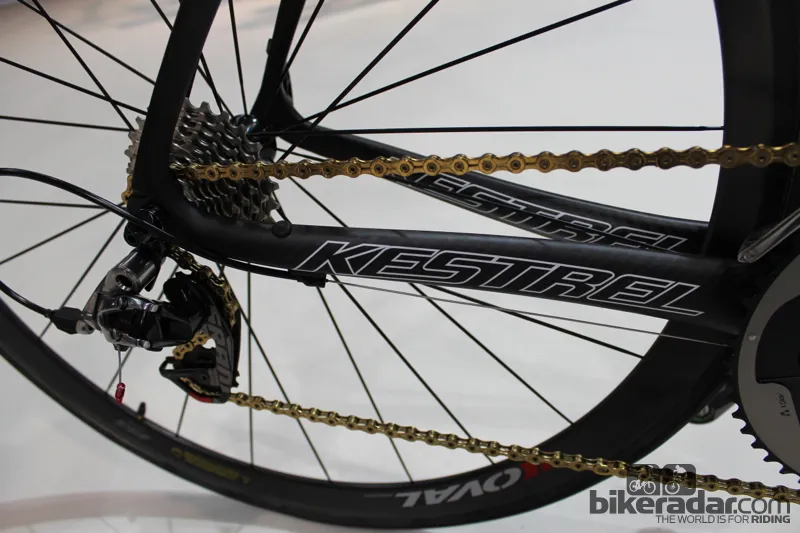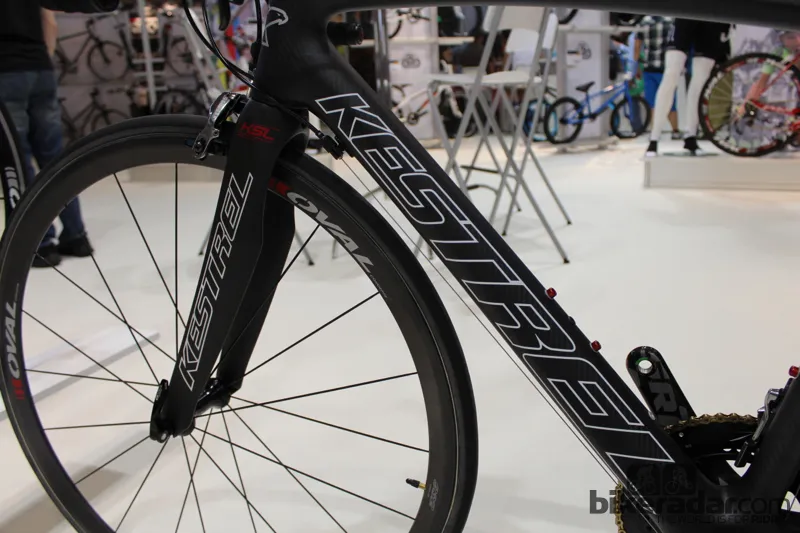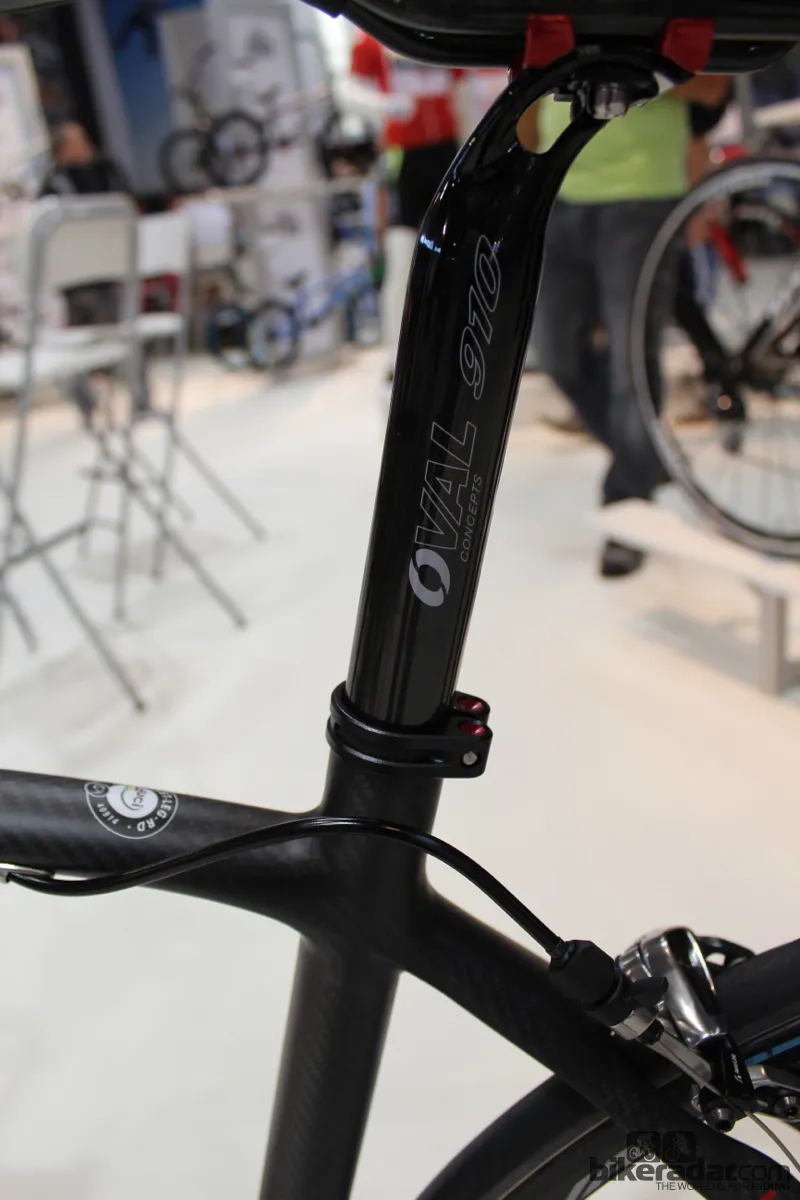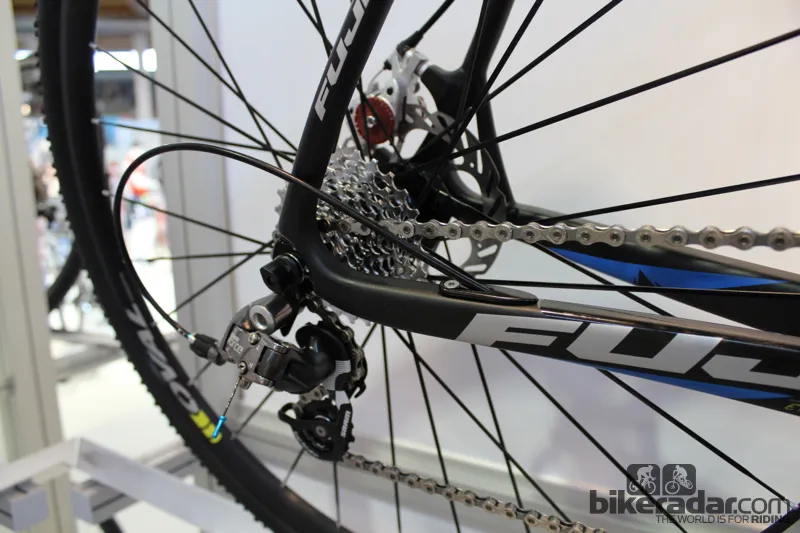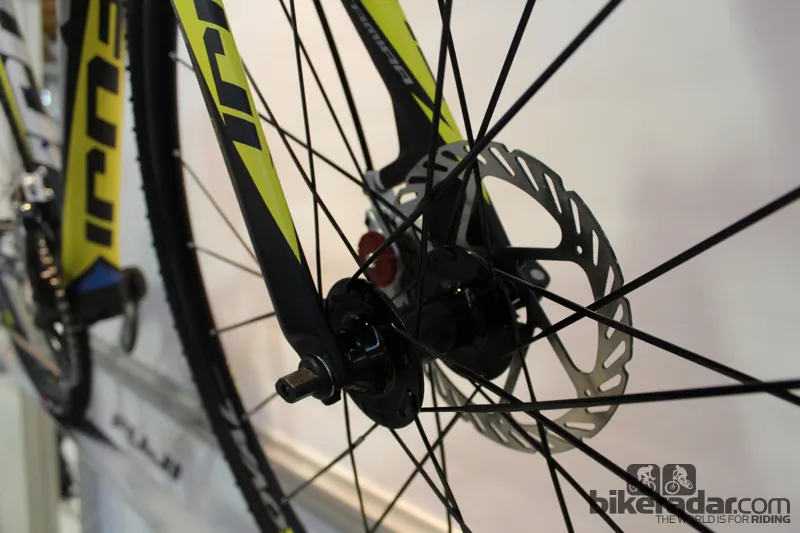The people behind Fuji will admit — it's as big an emotional investment as it is a financial one.
With the all-new carbon fiber Track Elite, Fuji poured a lot of money into R&D and the requisite new molds for each size bike. And Fuji will likely not sell a huge number of the 4,699-Euro machines. Yet, the love of the sport — and the lessons learned that transfer over to the road — make it all worthwhile, says Fuji's Steven Fairchild.
"It's a huge investment for us," Fairchild said. "But it's a huge part of the sport's history and, for many of us at Fuji, our personal history, as well."
Fuji also has a new carbon cyclocross bike with cable discs — and is ready with for a hydraulic disc version as soon as SRAM can deliver the components — and the company's sister brand Kestrel has a new competition road bike.

Internal 'RIB' braces run the length of each fork, as well as inside the down tube
Track roots, and braces
Fuji had a carbon track bike in 2009 — one of the first carbon track bikes with a tapered head tube, Fairchild says — but this 2013 bike is, you guessed it, lighter and stiffer. Fuji added internal braces to the length of the down tube and each fork leg. The carbon braces are thinner than the tube walls, but provide enough structural support to contribute to the 27-percent gain in stiffness over the old bike.
The frame weighs 1,400g — heavy perhaps for a carbon road bike, but this isn't a road bike. After working with a German six-day track team, Fuji added solid steel dropouts to withstand the abuse of regular wheel changes.
The bike comes in six sizes, either as a frameset or as a complete bike. Fuji's parent company Advanced Sports recently bought Oval, and the Track Elite features a healthy dose of that brand, at the stem, saddle, seatpost and wheels. The crank is Shimano Dura-Ace and the handlebar is 3T Scatto Carbon.
A complete bike is $4,749/EU 4,699. UK pricing was not immediately available.
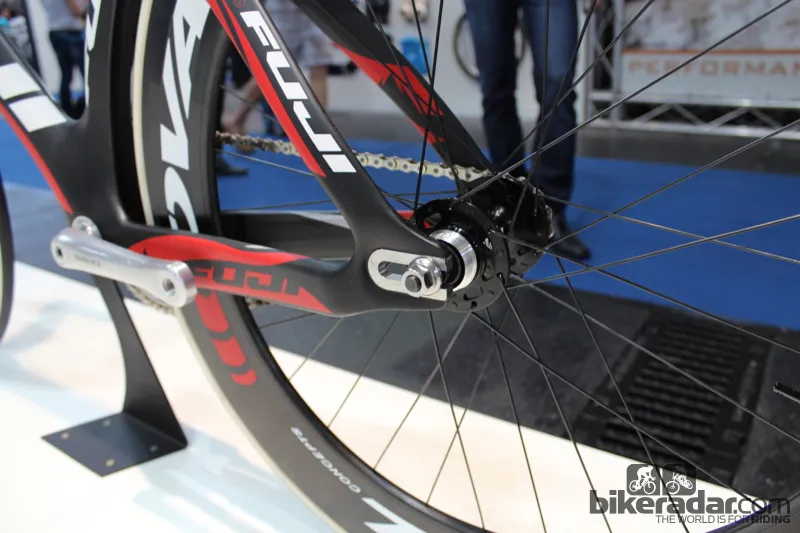
Solid steel dropouts contribute to the 1,400g weight of the otherwise carbon frame
Crossroads
Fuji has a new line of carbon fiber cyclocross bikes, the Altimira CX. As much as Fuji would like to roll out the top-of-the-line Altimira CX 1.1 with SRAM hydraulic disc brakes, it cannot until that product is delivered. So, for now, the top end is the Altimira CX 1.3 with cable-actuated disc brakes. The new molds that Fuji made for the Altimira will work for the 1.1 and the 1.3.
Although the 1.1 will come with tubulars, the $2,729 1.3 model comes with Challenge clinchers and SRAM Force.
Fuji's parent company Advanced Sports recently bought Oval, which explains the wheels and other components. When Oval was purchased it was only a cockpit brand (with stems, handlebars and seatposts), Fairchild said, but the company now has wheels, saddles, cranksets and more.
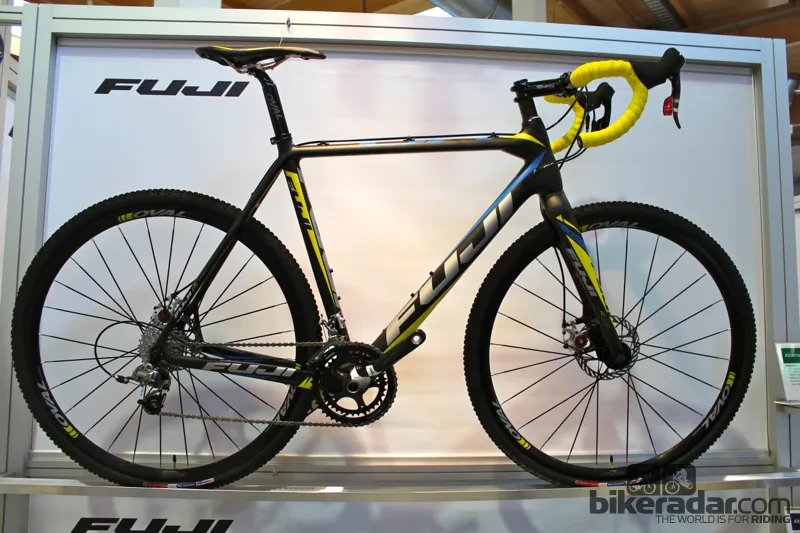
The carbon fiber Altimira CX 1.3 — with a hydraulic 1.1 to come
Kestrel Legend
Another Fuji sister brand, Kestrel, has a new road bike line called Legend SL, which is aimed at racers and those who like the feel of race bikes.
Lightness and stiffness are two metrics the bike industry loves to throw around, and Kestrel has some claims here, too, but Fairchild says the Legend SL has the right balance.
"I believe you can make a frame that is too stiff," he said. "I want to be able to stick to the ground in corners. Stiffness in the middle of the chassis is important, but you need a little compliance at the rear dropout to keep the bike from chattering."
A 55cm Legend frame weights 780g, according to the company. Built up with SRAM Red and tubular Oval wheels, a complete bike weighs 13.1lbs. The frameset is $2,799 and the SRAM Red bike is $6,100. UK pricing was not immediately available.
Perhaps most notable with the Legend is the fork construction method, which uses both an internal bladder and a foam core to maximize efficiency of the carbon lay-up. "Normally you get so much carbon bunched up in the crown area of a fork. This allows us to lay carbon much more flat and straight all the way from the steerer to the dropouts," Fairchild said. The foam core is melted out after the carbon is set. On the rest of the bike, reusable polyurethane bladders are used for internal shaping.
Each of the seven sizes has its own diameter tubing shapes, with larger frames getting larger diameter tubes.
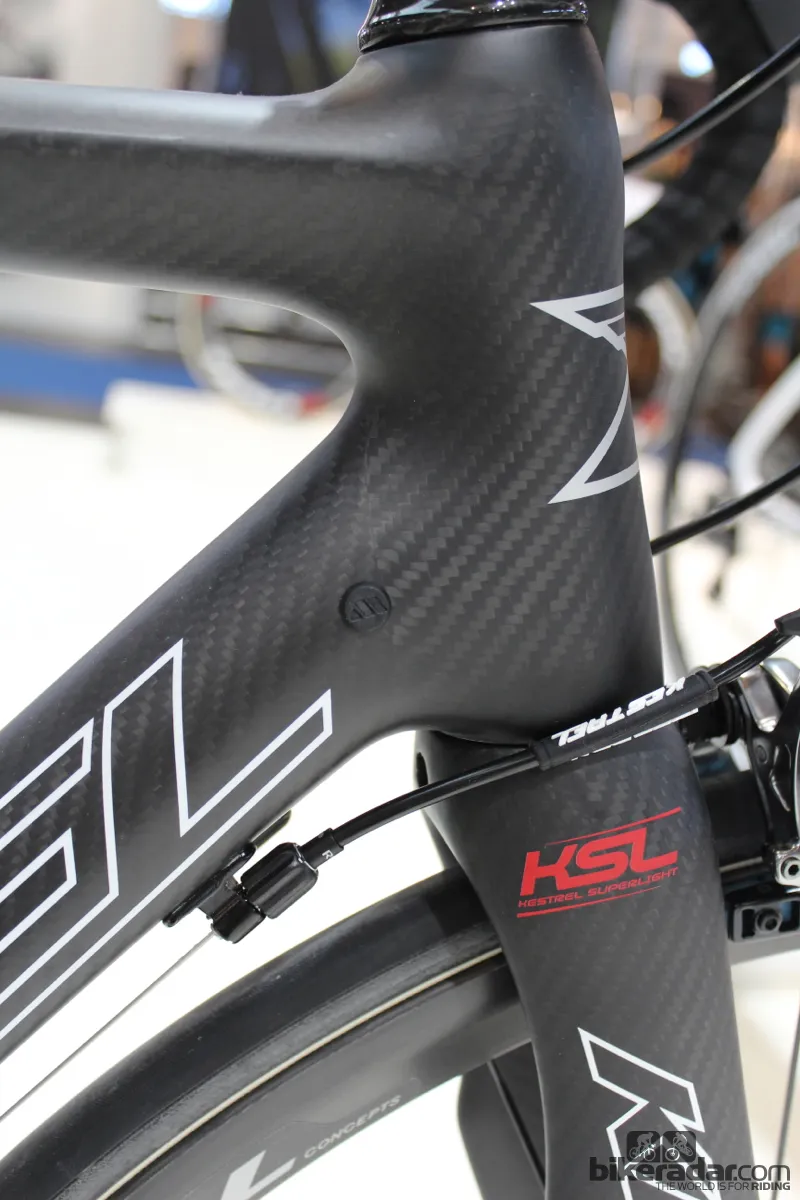
Kestrel uses a foam core to form the fork, then melts it out post-construction
